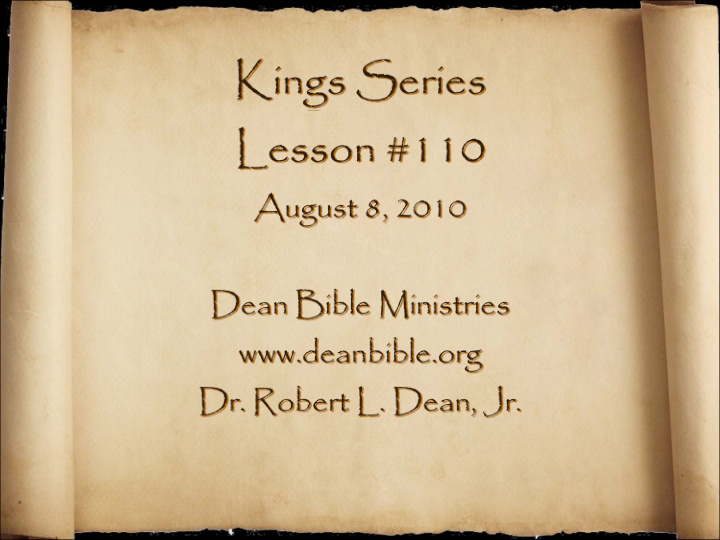



Can We Really Trust the Greek New Testament?
Isn’t the Bible just another human book, subject to error and expressing different opinions about God? Isn’t the Bible full of contradictions and errors? Hasn’t the Bible been changed over the years because it has been copied and translated so many times? How can we be sure the Bible we have today is the same as what was originally written?
Didn’t the Rabbis or the Church [a few powerful men, Constantine, etc.] just arbitrarily decide which books should be included in the Bible and which books should be rejected (and didn’t this just reflect their male-dominated, power-hungry agenda)? There are so many different interpretations of the Bible, how can we know which is right? Isn’t the Bible the product of an evolving religion that originated with the Babylonians and Assyrians? Doesn’t the Bible contain historical and scientific errors?
Does God exist? No Yes Can God communicate? No Yes Can God communicate clearly? No Yes Can God protect His communication?
Can God protect His communication? If God can communicate clearly, and protect His communication, then what would its characteristics be?
Consistent, accurate, be supported through evidence, internally logical and rational, without error
The Canon of Scripture The word “canon” derives from the Hebrew term q � neh and the Greek term kan � n , meaning “reed.” A reed was used as a measuring device; as such canon came to mean something that was a standard, or accepted authority.
N.T. Canon Masoretic Text Formation of A.D. 1008 Old Testament A.D. 33 Canon, 1400– Dead c . 350 B.C. Sea Scrolls 250 B.C .– 1948 A.D. 100
The New Testament Historical Gospels: Matthew, Mark, Luke, John Acts (Luke) Epistles Pauline (13) General Johanine (3) Petrine (2) Hebrews James Jude Revelation
The New Testament Life of Christ Hebrews, 63 James, 47 AD 90 AD 50 5 BC Pauline Revelation, 95 Epistles Matthew, 57–59 Luke, Acts 61
AUTHOR BOOK DATE WRITTEN EARLIEST GAP # COPIES Homer Iliad 800 BC 400 BC 400 645 Herodotus History 480-425 AD 900 1,350 8 Thucydides History 460-400 BC AD 900 1,300 8 Plato 400 BC AD 900 1,300 7 Demosthenes 300 BC AD 1100 1,400 200 Caesar Gallic Wars 100-44 BC AD 900 1,000 10 Livy History of Rome 59 BC AD 4 th p 1,000 1 p AD 17 10 th 19 Tacitus Annals AD 100 AD 1100 1,000 20 New Testament AD 50-95 AD 114-200 30-150 5,366
THE OXYRHYNCHUS PAPYRI Over 35 mss containing portions of the New Testament
THE CHESTER BEATTY PAPYRI (NAMED AFTER THE OWNER, CHESTER BEATTY) Three papyri including P45 (third century) contains portions of all four Gospels and Acts; P46 (late first century) has almost all of Paul’s epistles and Hebrews; and P47 (third century) contains Revelation 9–17.
THE BODMER PAPYRI (NAMED AFTER THE OWNER, M. MARTIN BODMER) The three important papyri in this collection are P66 (c. 175, containing almost all of John), P72 (third century, having all of 1 and 2 Peter and Jude), and P75 (c. 200, containing large parts of Luke 3–15).
CODEX SINAITICUS This manuscript was discovered by Constantin von Tischendorf in St. Catherine’s Monastery situated at the foot of Mount Sinai. It dates around A.D. 350, contains the entire New Testament, and provides an early and fairly reliable witness to the New Testament autographs.
Codex Sinaiticus
Codex Sinaiticus
CODEX VATICANUS
Codex Alexandrinus
“it is not possible that the gospels can be either more or fewer in number than they are.” –Irenaeus, ca. A.D. 160
“I accept the traditional view of the four gospels which alone are undeniably authentic in the church of God on earth.” –Origen Eusebius, History of the Church , VI, 25
“I know a certain gospel which is called The Gospel according to Thomas, and a Gospel according to Matthis, and many others have we read—lest we should in any way be considered ignorant. . . Nevertheless, among all these, we have approved solely what the church has recognized, which is that only the four gospels should be accepted.” –Origen
Recognition of the Canon Period of Separate Circulation (70–170 A.D.). Period of Separation (170–303 A.D.). Period of Completion (303–397 A.D.).
Tests for Canonicity 1. Apostolic supervision and authority. 2. Theological consistency. 3. Usage and acceptance by the Christian Church.
Recommend
More recommend